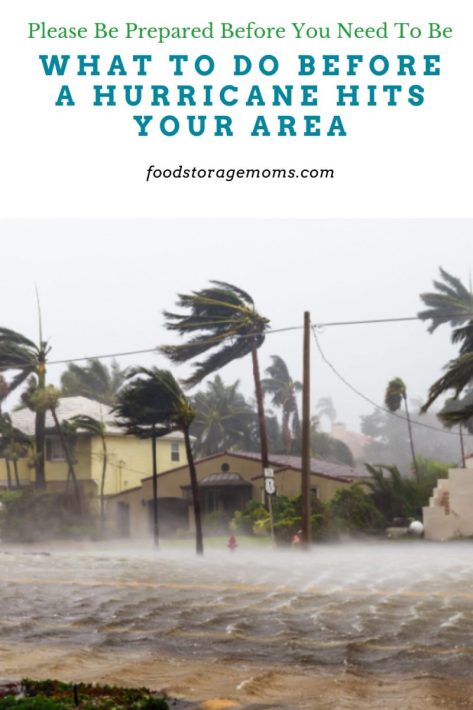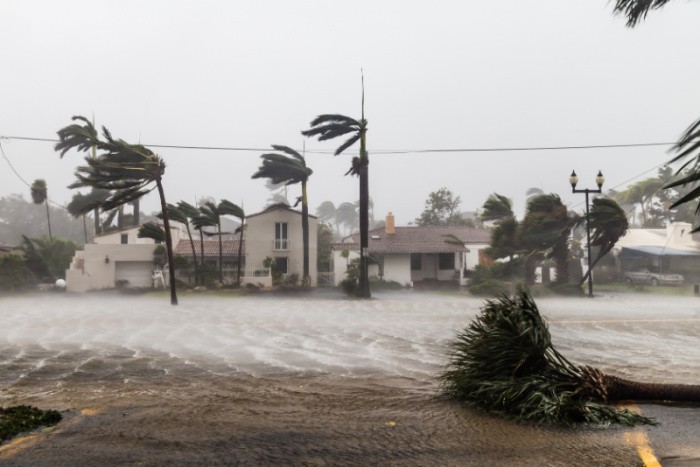Right here’s an in depth, sensible information on What To Do Earlier than A Hurricane Hits Your Space, ideal for private preparation or for sharing with others who could need assistance staying secure and prepared.
What To Do Earlier than a Hurricane Hits Your Space
When a hurricane is approaching, preparation is vital. Performing early can assist shield your house, your loved ones, and your peace of thoughts. Right here’s a step-by-step information to observe earlier than the storm arrives.


1. Keep Knowledgeable
- Monitor native alerts: Observe the Nationwide Hurricane Heart, native information, and climate apps.
- Know your evacuation zone: Discover out for those who dwell in a flood-prone or typical evacuation space.
- Join group alerts: Many counties ship emergency notifications through textual content or e-mail.
2. Create an Evacuation Plan
- Plan the place you’ll go: Select two secure locations—one close by and one farther inland.
- Map out routes: Have a number of routes in case roads are closed.
- Embody pets: Be certain that shelters or resorts enable pets, or find animal shelters prematurely.
- Share your plan: Inform household or buddies about your evacuation plans and get in touch with data.
3. Collect Emergency Provides
Put together a 72-hour package or hurricane emergency package with:
- Non-perishable meals (3–5 days’ value)
- Water (1 gallon per particular person per day), as you recognize, I choose 4 gallons per particular person per day
- Battery-powered or hand-crank radio
- Flashlights & further batteries
- First-aid package & medicines
- Hygiene objects (cleaning soap, sanitizer, wipes)
- Blankets, further garments, sturdy footwear
- Money in small payments
- Important paperwork in waterproof luggage (Free Emergency Paperwork Obtain)
- Chargers & energy banks
- Copies of IDs and insurance coverage papers
(Tip: Retailer your package in an easy-to-carry bin or backpack.)
4. Put together Your House
- Herald out of doors furnishings: Safe or retailer garden chairs, grills, and backyard instruments.
- Board up home windows: Use storm shutters or plywood.
- Clear gutters and drains: Stop water buildup and roof leaks.
- Test sump pumps and turbines: Be certain that they’re working.
- Flip the fridge to the coldest setting: It helps protect meals if energy goes out.
- Unplug small home equipment: Reduces the danger of injury from energy surges.
5. Put together Your Car
6. Shield Essential Data
- Retailer digital copies of insurance coverage insurance policies, deeds, medical data, and IDs.
- Preserve onerous copies sealed in waterproof luggage.
- {Photograph} your house and valuables for insurance coverage claims later.
7. Assist Others
- Test on older neighbors or folks with disabilities.
- Share assets or trip provides with those that could not have transportation.
- Coordinate with local people teams for updates.
8. Remaining Steps Earlier than the Storm
- Set your fridge and freezer to the coldest setting.
- Flip off propane tanks.
- Cost all telephones, laptops, and flashlights.
- Transfer to a secure inside room if not evacuating.
- Keep indoors as soon as winds begin: don’t go outdoors throughout the eye of the storm.
Ten Latest Main U.S. Landfalling Hurricanes
Here’s a desk summarizing ten current main U.S. landfalling hurricanes, together with their 12 months, approximate U.S. loss of life toll, and estimated harm. The figures are from publicly obtainable sources and should be revised.
| Hurricane (Yr) | Deaths (U.S.) | Estimated U.S. Injury* | Notes |
|---|---|---|---|
| Hurricane Helene (2024) | ~250 + Monetary Occasions+3Encyclopedia Britannica+3Wikipedia+3 | ~$78.7 billion NOAA Coastal Administration+1 | Made landfall in Florida’s Huge Bend area; in depth flooding inland. |
| Hurricane Idalia (2023) | ~12 Wikipedia | ~$3.5 billion Wikipedia | Class 4 at peak; landfall in Florida and impacts into Georgia/Carolinas. |
| Hurricane Ian (2022) | ~150+ Wikipedia+1 | ~$112 billion+ Wikipedia+2The Zebra+2 | Cat 5 at one level; main U.S. harm in Florida. |
| Hurricane Ida (2021) | ~90+ CDC+1 | ~$75 billion PBS+1 | Landfall in Louisiana; heavy harm and flooding in Northeast U.S. as remnants. |
| Hurricane Laura (2020) | ~81 Wikipedia | ~$23.3 billion+ Wikipedia | Made landfall in southwest Louisiana as a robust main hurricane. |
| Hurricane Michael (2018) | ~74 Wikipedia+1 | ~$25 billion Nationwide Hurricane Heart+1 | Class 5 landfall in Florida Panhandle; very intense storm. |
| Hurricane Harvey (2017) | ~100 The Zebra+1 | ~$160 billion (adjusted) The Zebra+1 | Cat 4 landfall in Texas; large rainfall & flooding. |
| Hurricane Irma (2017) | — (deaths not on this desk) | ~$38.4 billion (adjusted) III | Made landfall as a post-tropical storm however had an enormous U.S. influence (NY/NJ). |
| Superstorm Sandy (2012) | ~160 (together with oblique) Wikipedia+1 | ~$88.5 billion The Zebra+1 | Class 5 landfall within the Florida Panhandle; very intense storm. |
| Hurricane Katrina (2005) | Main class storm; widespread U.S. impacts, together with Florida. | ~$200+ billion (inflation adjusted) The Zebra+1 | Some of the harmful U.S. storms ever. |
*Injury values are U.S.-only estimates except famous, and lots of are rounded or preliminary.
Essential Notes & Caveats
- “Deaths” could embrace direct and oblique fatalities relying on the supply; “harm” estimates fluctuate extensively and will exclude some oblique prices.
- This listing is not strictly the “final ten hurricanes” in chronological order however relatively the current main U.S. landfalling storms for which fairly dependable knowledge can be found.
- Some storms (e.g., Irma) have much less full knowledge on this abstract; for a totally detailed breakdown, extra analysis could also be required.
- Adjusted/inflation-adjusted figures could differ relying on the supply.
- Many storms trigger extra oblique and long-term impacts not captured in these headline numbers (e.g., long-term mortality, financial disruption).
How Hurricanes Are Rated
1. The Saffir–Simpson Hurricane Wind Scale (SSHWS)
That is the official system utilized by the Nationwide Hurricane Heart (NHC) to categorise hurricanes within the Atlantic and jap Pacific Oceans.
It divides hurricanes into 5 classes (1–5) primarily based on their sustained wind speeds, that are measured in miles per hour (mph) or kilometers per hour (km/h).
Hurricane Score Scale
| Class | Wind Pace (mph) | Wind Pace (km/h) | Potential Injury |
|---|---|---|---|
| Class 1 | 74–95 mph | 119–153 km/h | Minimal — Some harm to roofs, siding, and timber. Energy outages doable. |
| Class 2 | 96–110 mph | 154–177 km/h | Average — Main roof and siding harm; near-total energy loss for days. |
| Class 3 (Main) | 111–129 mph | 178–208 km/h | Devastating — Structural harm to small buildings; electrical energy and water unavailable for days to weeks. |
| Class 4 (Main) | 130–156 mph | 209–251 km/h | Catastrophic — Extreme harm to most constructions; long-term outages lasting weeks or months. |
| Class 5 (Main) | 157+ mph | 252+ km/h | Catastrophic — Excessive share of properties destroyed, space uninhabitable for weeks or months. |
2. How Wind Pace Is Measured
- Sustained winds: The dimensions makes use of 1-minute common sustained wind pace at about 10 meters (33 ft) above the floor.
- Instruments used:
- Satellite tv for pc estimates
- Reconnaissance plane (“Hurricane Hunters”)
- Buoys and climate stations
3. What the Scale Doesn’t Measure
The Saffir–Simpson scale solely measures wind.
It does not account for:
- Rainfall or flooding
- Storm surge (ocean water pushed onto land)
- Tornadoes spawned by the storm
- Measurement or length of the hurricane
These components can nonetheless trigger large harm, even from lower-category storms (for instance, Hurricane Harvey in 2017 triggered catastrophic flooding regardless of being Class 4 at landfall).
4. Abstract
- Class 1–2: Harmful, however manageable with preparation.
- Class 3–5: “Main hurricanes”, extremely harmful and life-threatening.
- Scores are decided by most sustained wind, not rainfall or surge.
Greatest Locations to Evacuate To Throughout a Hurricane
1. Observe Official Evacuation Routes
- Native and state emergency administration workplaces designate secure evacuation routes that lead inland or to increased floor.
- These roads are constructed to deal with heavier visitors and are prioritized for clearing particles.
- At all times observe indicators marked “Evacuation Route.”
- You’ll find them by means of:
- State DOT (Division of Transportation) web sites
- Native emergency apps or broadcasts
- County emergency administration workplaces
2. Evacuate to a Designated Shelter
- County or Purple Cross shelters are the most secure possibility for those who can’t stick with household or in a resort.
- Shelters are:
- Away from flood zones
- Constructed to face up to excessive winds
- Usually stocked with meals, water, and fundamental medical care
- Discover close by shelters by means of:
(Tip: Deliver private objects like medicine, chargers, bedding, and identification — shelters could not present the whole lot.)
3. Stick with Associates or Household Inland
- If doable, plan forward of time with kin or buddies who:
- Reside inland and outdoors flood-prone areas
- Have dependable energy, meals, and water provides
- Are reachable by a number of journey routes
- This selection is usually extra comfy and personal than a public shelter.
4. Resorts and Lodging Away From the Coast
- Many resorts inland supply hurricane evacuation reductions throughout storm warnings.
- E-book early — rooms fill rapidly as soon as a hurricane watch is issued.
- Seek for resorts alongside interstates no less than 50–100 miles inland.
5. Neighborhood or Church Facilities
- In smaller cities or rural areas, church buildings, faculties, and group facilities typically open as short-term shelters.
- These could not all the time be listed on-line, so take heed to native radio updates for bulletins.
6. Keep away from Unsafe Evacuation Areas
Don’t evacuate to:
- Cell properties or trailers (even outdoors the storm zone — too fragile for hurricane winds).
- Low-lying coastal areas or bridges.
- Flood-prone valleys or riverbanks.
- Highways or overpasses — unsafe to shelter beneath or close to.
7. If You Have Pets
- Select pet-friendly shelters or resorts (examine prematurely — not all settle for animals).
- Deliver pet carriers, leashes, meals, water, and vaccination data.
- Use the Pet-Pleasant Shelter Locator at bringfido.com/emergency.
8. Greatest Common Areas to Head Towards (U.S.)
In the event you’re in hurricane-prone coastal states like Florida, Texas, Louisiana, Alabama, Georgia, or the Carolinas, transfer towards:
- Larger elevation inland areas (typically 50–100+ miles from the coast).
- Massive inland cities resembling:
- Florida: Gainesville, Tallahassee, Ocala
- Texas: Austin, San Antonio, Dallas
- Louisiana: Shreveport, Monroe
- Georgia: Macon, Columbus
- Carolinas: Raleigh, Greensboro, Greenville
(Actual locations rely in your state’s evacuation orders and storm path.)
The greatest place to evacuate is the one which will get you out of the hazard zone rapidly, safely, and nicely earlier than landfall.
At all times:
- Take heed to native officers
- Depart early to keep away from visitors
- Deliver provides for no less than 72 hours
Issues to Inventory Up On Earlier than a Hurricane
Remaining Phrase
The greatest place to evacuate is the one which will get you out of the hazard zone rapidly, safely, and nicely earlier than landfall. Preparation provides you management and calm within the chaos. Hurricanes are unpredictable, however planning will increase your loved ones’s security and your capacity to recuperate afterward. Could God bless this world, Linda
Copyright Pictures: Hurricane Irma AdobeStock_171085788 By Satoshi Kina, Hurricane Irma Second Image AdobeStock_171085827 By Satoshi Kina,


